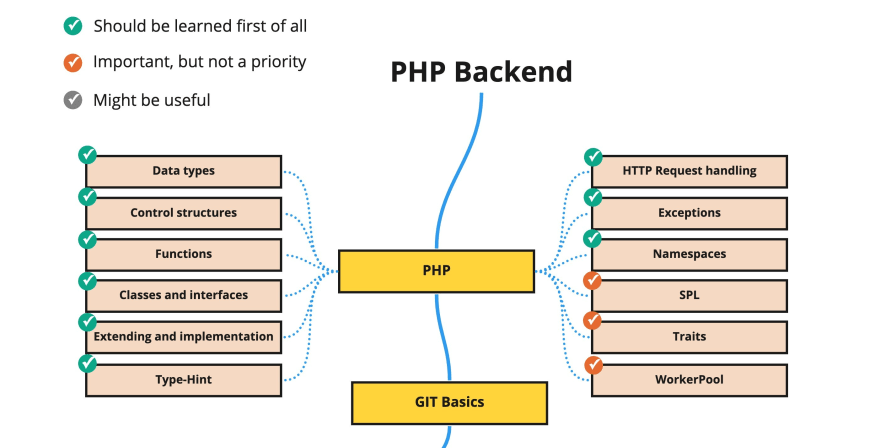
PHP, or Hypertext Preprocessor, is a popular scripting language that has been widely used in web development since its creation in 1994. Known for its efficiency and ease of use, PHP has become a fundamental component in the development of dynamic websites and web applications. This article will explore whether PHP is used for backend or frontend development, providing detailed insights and examples to clarify its primary role.
Understanding Frontend and Backend Development
Before diving into PHP's specific use cases, it's essential to understand the difference between frontend and backend development.
Frontend development, often referred to as client-side development, involves creating the
parts of a website or web application that users interact with directly.
This includes:
• HTML: The structure of the webpage.
• CSS: The styling and layout of the webpage.
• JavaScript: The behavior and interactive elements of the webpage.
Backend Development
Backend development, or server-side development, focuses on the server, database, and
application logic that power the frontend. This includes:
• Server-Side Scripting: Handling requests and responses between the client and
server.
• Database Management: Storing, retrieving, and managing data.
• Application Logic: Processing data and ensuring the application functions
correctly.
PHP as a Backend Language
PHP is predominantly a backend language.
Here are the key reasons why PHP is used for backend development:
Server-Side Scripting
PHP is designed to run on the server, processing user requests, interacting with databases,
and generating dynamic content to send back to the client. It is embedded within HTML
and executed on the server before the page is sent to the user's browser, making it ideal for
backend tasks.
Database Interaction
PHP has strong support for various databases, including MySQL, PostgreSQL, and SQLite.
It can easily connect to databases, execute queries, and manage data, which is a core
function of backend development.
Dynamic Content Generation
PHP excels at generating dynamic content based on user input or other factors. For
example, it can create personalized user experiences by retrieving user-specific data from
a database and displaying it on a webpage.
Security
PHP provides built-in functions and practices to enhance security, such as data
sanitization, encryption, and secure session management. This is crucial for backend
development to protect sensitive information and ensure secure data handling.
PHP in Frontend Development
While PHP is primarily a backend language, it can indirectly influence the frontend.
Here’s how:
Templating Systems
PHP can be used to create templates that generate HTML dynamically. This allows
developers to separate the presentation layer (HTML/CSS) from the business logic (PHP),
making it easier to manage and maintain the code. Popular PHP templating systems
include Twig and Smarty.
AJAX Requests
PHP can handle AJAX requests, allowing for asynchronous data updates on the frontend
without reloading the entire page. This is commonly used in modern web applications to
enhance user experience by providing real-time updates.
Embedded HTML
PHP can be embedded within HTML to create dynamic webpages. This means that while
PHP itself is a backend language, it directly contributes to generating the HTML that forms
the frontend.
Common Use Cases of PHP
Content Management Systems (CMS)
PHP is the backbone of many popular CMS platforms like WordPress, Drupal, and
Joomla. These systems rely heavily on PHP for backend operations, such as managing
content, handling user authentication, and interacting with databases.
E-commerce Platforms
Platforms like Magento and WooCommerce use PHP to power their backend operations.
PHP handles tasks such as processing payments, managing inventory, and generating
dynamic product pages.
Web Applications
Many web applications, such as social networks, forums, and blogs, use PHP for their
backend functionality. Examples include Facebook (in its early years), phpBB, and
Media Wiki.
Conclusion
In conclusion, PHP is primarily a backend language designed to handle server-side
scripting, database interactions, and dynamic content generation. While it can influence
the frontend by generating HTML and handling AJAX requests, its core functionality is
centered around backend development. Understanding the strengths of PHP and its role in
web development can help businesses and developers create robust, dynamic, and
secure web applications